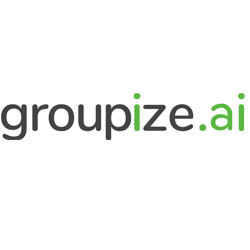Count Down to Sunshine Act
The final rule for tracking physician payments under the Sunshine Act has provided needed clarity, but questions remain about data accuracy and the public’s ability to interpret the information. The pharmaceutical industry now has some guidance on how to report payments to physicians under the Physician Payment Sunshine Act. On Feb. 1, 2013, the Centers for Medicare & Medicaid Services (CMS) released the final rule to implement the Sunshine provisions of the Affordable Care Act of 2010. This provision requires pharmaceutical and medical device companies to report to CMS payments made to physicians of more than $10, as well as physician ownership and investments. The effort is an attempt to bring transparency to the relationships between pharma companies and physicians. And while experts say the final rule has brought clarity to some issues, there are still concerns that the release of this information will have an impact on physicians’ willingness to work with industry. The first reporting period will be Aug. 1, 2013 to Dec. 31, 2013. The first reports must be submitted to CMS by March 31, 2014. CMS will release the reported data on its public website by Sept. 30, 2014. The CMS had delayed the collection of data until six months after the final rule was released. Under the reform law, data collection was supposed to start Jan. 1, 2012. Becky Holloway, product marketing manager at Revitas, says the final rule clarified many of the questions that had been raised. “In the instances where reporting could have gone one way or the other, in the end it seems that reporting falls squarely with the manufacturer," she says. She says the rule also provided some helpful clarifications around how to divide up payments. For example, if a sales rep delivers a lunch to a doctor’s office the final rule details how to distribute the value of that meal when people who are not doctors may be consuming that meal. Elizabeth Carder-Thompson, partner at the law firm of Reed Smith, explained that the final rule also cleared up some confusion about who was required to report, especially as it relates to foreign entities. “A manufacturer, for reporting purposes, is one that has a U.S. presence, has a physical location in the United States, or conducts activities in the United States," she explains. “Companies that distribute in the United States, even if they have manufacturing outside of the United States, are still going to be subject to the rule." One thing not in the final rule was a requirement for reporting payments to speakers for certain CME events, says Dave Rear, president of Advanced Clinical Concepts. “CMS was considering reporting payments for physicians," he says. “But CME is guided by the ACCME and there are already established rules and guidelines. A recommendation was made to remove CME reporting from the final act." Questions Remain Industry experts say the final rule still contains some gaps. One of the biggest questions is how the data will be presented to the public. “Ultimately, the whole point of the Sunshine Act is to make the public aware of the relationship between manufacturers and physicians," Ms. Holloway says. “There is going to be a website. But we know very little about what this public website is going to look like, and there has been very little education directed to the public about this." Sam Whitaker, founder and CEO of Greenphire, says CMS has not detailed the tools available to the public to allow consumers to slice and dice the information. “Nor has there been a discussion of what education will be given to the public on the meaning of the information reported," he says. Ms. Carder-Thompson says there is concern about the public’s ability to fully understand the information that is going to be reported given how complicated it will be. “It may be difficult to relate payments and transfers of value to a specific product and the reported information may appear out of context and confusing to the public," she says. Additionally, there are gaps in the rule and further clarifications needed. For example, Ms. Carder-Thompson says there is no information in the rule about reporting payments to nonphysicians within teaching hospitals. “If a company brings lunch into a group of operating room nurses in a teaching hospital, is that a reportable transaction?" Ms. Carder-Thompson asks. “The rule doesn’t define what are reportable payments to a teaching hospital." Additionally, Mr. Whitaker says the format for the reporting for clinical research related payments has not been finalized and distributed. “Related to the format, allocating the transfers of value to investigators when multiple investigators are involved at the same site has not been explained," he says. “Additionally, there is no accounting for the cost of providing the services for which the clinical investigators are being paid. Much of the Sunshine Act regulation covers payments or transfers of value to physicians done informally; clinical research reimbursements are done as per the clinical trial agreement." The final rule also doesn’t address how audits will be approached, says Seth Whitelaw, director of health sciences compliance, Deloitte. “CMS is required in the statute to conduct audits, but this is still an open item," he says. “The last information I had indicated that CMS was focusing on preparing the reporting document and then it would worry about the audit piece." Implications of the Rule Industry experts say the rule may have unintended consequences. Ms. Carder-Thompson says one fear is that physicians simply are not going to want their names published. “This could have a chilling impact on their desire to undertake research and development activities because everything now has to be reported publicly," she says. Survey results bear out that Ms. Carder-Thompson’s fear may be warranted. A survey last year by Deloitte in collaboration with Forbes Insights found that physicians have concerns about how the data will be interpreted. In a more recent survey by MMIS and Healthcare Data Solutions, 21% of physicians would sever their relationship with a manufacturer that reported inaccurate information about payments or transfers of value if disclosed to the public, and 43% admitted this would affect their ongoing relationship with industry. Mr. Rear says it’s likely that physicians won’t know how the information will be used and interpreted until after it becomes available. “I hope this reporting doesn’t put a wedge between these key stakeholders," he says. “Institutions are concerned about impropriety and the appearance of conflict and are hesitant to work with industry, at least on a promotional level. The potential long-term implications could negatively impact patient care if not managed appropriately." Ms. Carder-Thompson says the dispute resolution provisions may not provide enough time to address all issues. This process permits a 45-day period for everyone to look at the data that’s going to be published and then a 15-day period for disputes to be resolved. She suggests companies provide physicians with reports of their “spend" throughout the process rather than waiting until the end of the data collection period. Ms. Carder-Thompson says the CMS has just released the list of teaching hospital covered recipients to which payments and other transfers of value must be reported by manufacturers. The list can be found on CMS’ website. Jill Dosik, president of GCI Health, raised several practical concerns about making physician payments public. “How many consumers are going to access this information? Will it affect their behavior or relationship with physicians? Will physicians change their interactions with industry because of it? All of this remains to be seen and we really won’t know for some time what the full implications will be." “It’s easy to look at the Sunshine Act as mainly a finance or IT issue, but it impacts just about every aspect of a company, and compliance requires high-level executive sponsorship. " seth whitelaw / Deloitte @sethwhitelaw “My fear is that the Sunshine Act regulations could have a chilling impact on research. " Elizabeth Carder-thompson Reed Smith “In general, the burden for reporting physician payments lies squarely with the manufacturer. " becky holloway / Revitas “Under the Sunshine Act, companies have to gather data at the most granular level possible. Breaking aggregated data lacking in granularity into its component parts is an almost impossible task. " sam whitaker / Greenphire Sunshine Act: Reporting Details » Cash or a cash equivalent » In-kind items or services » Stock, a stock option, or other ownership interest, dividend, profit, or other return on investment » Any other form of payment or other transfer of value » Consulting fees » Compensation for services other than consulting » Honoraria » Gift » Entertainment » Food » Travel (including the specified destinations) » Education » Research » Charitable contribution » Royalty or license » Current or prospective ownership of investment interest » Direct compensation for serving as faculty or as a speaker for a medical education program » Grant » Any other nature of payment or other transfer of value Source: Centers for Medicare & Medicaid Services, Department of Health and Human Services Becky Holloway Product Marketing Manager Revitas Pharmaceutical companies need to review and make sure all of their contacts are in order. There are a number of companies out there that offer solutions to handle aggregate spend, which link a physician to a specific date to a specific payment. But to pass an audit, companies need more than just a report. Companies need to connect their aggregate spend reporting tools with a contracts management software solution. For example, there are a number of different supporting documents necessary to ensure that a company paid a qualified physician for a legitimate purpose. Companies need to have different documents to make sure that what was paid was fair market value. There has to be a needs assessment document and documentation that a physician was qualified. If they don’t have those things detailed in a contract, companies are going to open themselves up to being fined or further inquiry into their business practices. Sam Whitaker Founder and CEO Greenphire It’s important to have automated systems that can track payments made by external partners, such as CROs. It’s going to be difficult for those companies that haven’t updated their payment procedures to process and track the payments made under their clinical trial agreements. The level of detail that is required is tremendous. If companies are planning to manage this information with manual human physical processes, there are going to be errors. When one looks at the scale of the payments being made, the number of physicians, and the number of payment sources, it will be difficult for even the most diligent manual processes to get the data right. Companies need a technology infrastructure in place that allows them to track very granular payments associated with data. The infrastructure, conceptually, has to mirror what is seen in other industries with more simplified vendor contracts; so having a system that can record or keep track of why a payment is being made, when it is due, and how much, as well as data specific to the industry, including who’s approving the payment, when it is approved, why, and what study, the subject ID, and the therapeutic area is critical. Seth Whitelaw Director of Health Sciences Compliance Deloitte Companies need to make sure there is high-level executive sponsorship for any compliance initiative. It’s easy to look at the Sunshine Act and say this is mainly a finance or IT issue. But the regulation really impacts just about every aspect of a company and requires careful thought as to the policies and practices that companies have and how to streamline them. These are high-level business decisions that need to be made. This also requires sufficient resources because adhering to the regulation is not inexpensive. Sunshine Act Best Practices A Sunshine Act Readiness Assessment Companies should start with a formal legal interpretation of the final rule, which will serve as a foundation for establishing other core components of a company’s approach, including common definitions, the business requirements, technical requirements, etc. Companies should also analyze the rule through a business process and systems lens, with emphasis on the updates and clarifications that are needed. PwC analysts suggest that companies conduct a “HealthCheck" to ensure compliance: » First Level: High-level understanding/agreement on the impact across all spend transparency program components. » Second Level: An analysis of the impacts within the organization with supporting recommendations to remediate or enhance program elements. » Third Level: Indication of how to prioritize needed remediation and/or enhancement opportunities and supporting cost, resource, and timing estimates to implement the changes. Source: PwC










